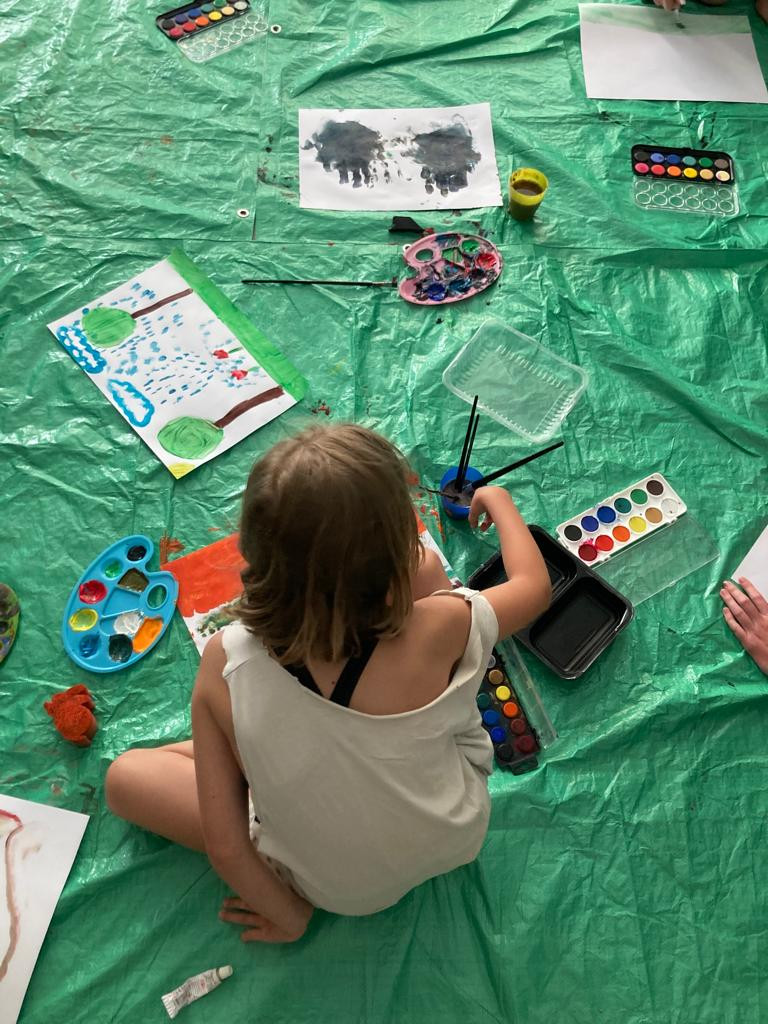Difficulty Discussing Complex Emotions with Children? Give Art Therapy a Try!
Published: Jan 12, 2023 Reading time: 5 minutes Share: Share an articleWhen working with children and young people in general, it’s essential to keep them engaged. And if they are both engaged and learning important life lessons, you've basically hit the jackpot. But the goal should not be just to make everything they do fun, but to really make them understand the importance of the activity and the significance of the result. One activity that does this very well is art therapy. It can take many forms and can be done both individually or in groups. Eva, a career counselor here in Prague, is trained in art therapy and helps lead lessons with the children who join our extracurricular club at our cultural community centre. With excellent results!

Sometimes, art therapy is used to form an initial diagnosis in psychotherapy. An experienced professional can look at your artwork and, ideally together with the creator, can put together some sort of idea of who you are and what you might be dealing with right now. That said, art can also just be used to help express issues that are difficult to talk about. The magic of any sort of art therapy lies in the fact that each image can be easily redesigned and/or altered. The artist can show us the world around them or imagine a new world entirely. The way in which the image is created is part of the process as it may help to communicate important ideas in a new way.
A form of therapy for both introverts and extroverts
Art therapy is ideal for both introverts and extroverts, as it can successfully engage even the shyest person, while engaging more verbose individuals in a different type of conversation. As the artist describe their creation, they may find that they suddenly understand far more about themselves than they had originally thought. Perhaps their subconscious is talking to them through the picture. After all, sometimes it really takes looking at things from a different perspective to finally find answers to seemingly unsolvable questions. This is also why it is so important that both the therapist and the artist are present when the work is being described. For this reason, as well as others, art therapy can be very successful. Indeed, sometimes it is even more successful than other forms of therapy.
A less therapy-driven and more pedagogically-focused branch of art therapy is called “artephiletics” (or “artefiletika,” in Czech) and is ideal for one-off meetings, or for educational institutions that might shy away from the idea of traditional therapy. Artephiletics is very similar to art therapy, insomuch as it involves creative work, but it is different in that instructor doesn’t dive as deep into the a therapeutical exporation of the work. Instead, its goal is mainly one of self-knowledge and increased awareness of the outside world. We’ve use artephiletics with some of the children who attend our extracurricular clubs and/or participate in our other extracurricular activities. Here’s what it looks like:
At the beginning of the meeting, we relax. This is because before we start creating, it is important to get into the right mindset and to be on the same page as the rest of the group. We need to be ready to address the topic that will serve as the central theme for today’s lesson. For example, in one of the artephiletic sessions, the theme of the lesson was anger. The students were first asked to remember the last time they last got angry and what they experienced. We asked them questions like: “why do we get angry?” and “what happens in our bodies and in our heads when we get angry?” The reasons for anger were various, but they are often connected to feelings of helplessness. For instance, someone might get angry when they feel like they can't do anything about their current situation. Perhaps they feel that they can't solve it by themselves, and no one will help them. They might feel entirely alone and that makes them angry. Once the students came up with various reasons for why they get angry, they express their feelings on paper. This creative technique was up to each student, and we gave them various media to choose from. Most children chose tempera paints, which they applied either using brushes or sponges.
It's not healthy to hold onto anger
While the paintings are drying, the students have the opportunity to get to know each other in a completely different way, either by playing a game or singing a song together. It’s after their work is dry that it’s time to return to the topic at hand. We know that it’s not healthy to keep anger inside, but we must realize first when and how we express anger and if that method is appropriate. We have to make sure that our methods for self-expressions aren’t inappropriate or hurtful, either to ourselves or toward those around us. We might list what are and are not appropriate ways to express anger. And, of course, we’ve found that even some adults don’t know to vent their anger properly. This isn’t uncommon. After our discussion on proper self-expression, we all tear our pictures of anger up and then with the torn-up pieces create a collage, either of a heart, a sun and a smiley face. In this way, we’ve taught the students to reflect on their anger, express it and channel it into something else. We proudly display these creations at our community centre.
Feel free to stop by and see the student collages for yourself! Also, check out either artephiletics or art therapy. In addition to being fun, it might really help you out.



